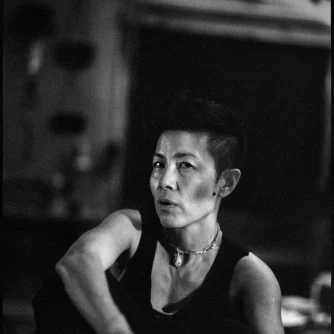Approach
Ann Tutt: "She took movement into her own body, discovering things, and a freedom. The work she studied with Nehemia has the effect of opening your eyes, makes you see the ways people are working against themselves. She saw, and her aim was to try and take people out of that. Learning this was next to impossible to within the prevailing formal dance training model of that time."
Davida Monk: "One of the beautiful things about the mitzvah work, especially as it is taken on by people who have dance influence (my own preference) is that there’s a creative aspect, a sense of freedom in the interpretation of what’s given. So that there are things that are laid down. Movements - we wouldn’t really call them exercises, but prescriptions, as it were - but these can be applied by a creative artist in many, many ways. Many here will apply Amelia’s ideas to creative work, so it is not the case that we only do what Amelia did. That’s a deadness. Her work is a live thing, and I’m sure that Amelia was conscious of that, too."
Jennifer Mascall: “She was real, and she was wise about the body, and lived without hype. This is very courageous.She had relatively little interest in the other modalities developing simultaneously in her time period; rather than finding places where these systems could meet, she determined to continue on her particular route of understanding. To me, this is the approach of an artist, and her information and hands on work demonstrated the fruitfulness of this approach.
In the stripping down to the essentials, Amelia let you stand and walk the way you were meant to. And the nature of that allows you to actually feel the partnership with space. It allows you to feel that it is not you - walking. It’s a function of this duet that you do in space.”
Benoit Lachambre: “The work of Amelia projects the body into space - allows the body to be freed into space. Then you can really release the matter of the body. Then you are able to experience the body and the energy in other ways. It is the essence of being inhabited by an experience. The work challenges the way choreography is defined. It makes you realize that space is choreography.”
Ronnie Yee: “When I first met Amelia at the church where she lived in Davidson, I walked in and here was this person living in this place, and I realized that maybe this was why she became such a great innovator of the art - she isolated herself. She didn’t even have a license for a car. She isolated herself and studied this wholeheartedly. I am very skeptical, stubborn, and don’t believe in many things. It was a long process. I came to accept this work 100% and embrace it, integrate it completely into all aspects of my practice. I thank her so much for what she did for the human body. I am not putting a name on it like Itcush or Mitzvah. She revolutionized the way the human body is able to move. She knew how the body moved.”
Connie Moker-Wernikowski: “I've been choreographing with three young women whose training from childhood involved Amelia's work. The Itcush Method principles are a base assumption for these kids. For me, the whole Mitzvah process was the work of unlearning. But these kids started there. It's in their bodies. It’s quite remarkable – there’s something in the way they moved that is grounded deeply inside them – the freedom and release.”
Lee Su-Feh: “My first encounter with Amelia’s work was my first physical experience of what alignment could feel like and more importantly, it came out of a “releasing into” rather than a “working towards”. Her work lives in my own daily practice of self-care and the classes that I teach. My own work is driven by a belief in the capacity of the body to heal itself, a belief that the complexity of the body responding to its environment is fundamentally beautiful. Of course, Amelia Itcush’s work is present.”





